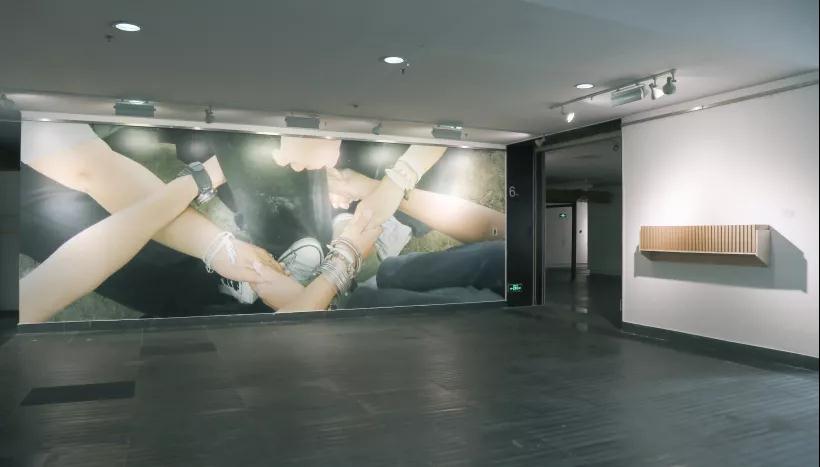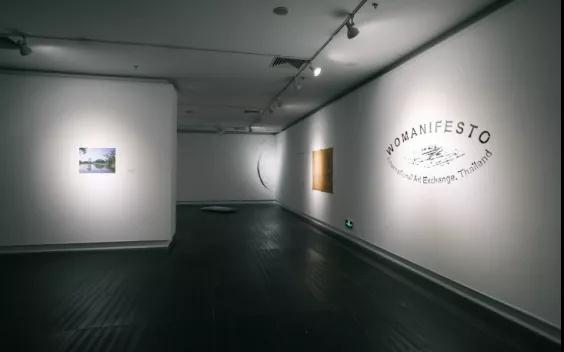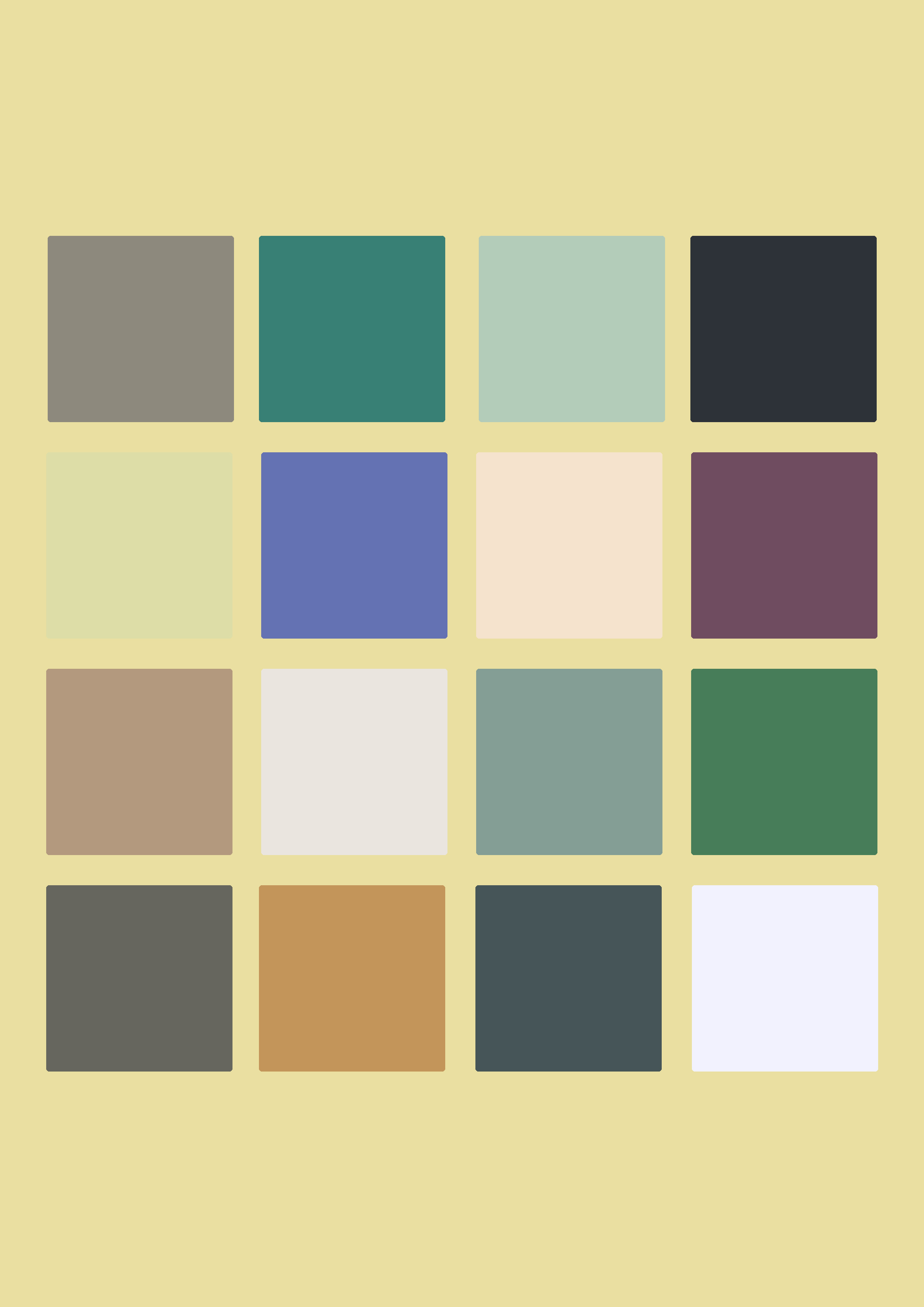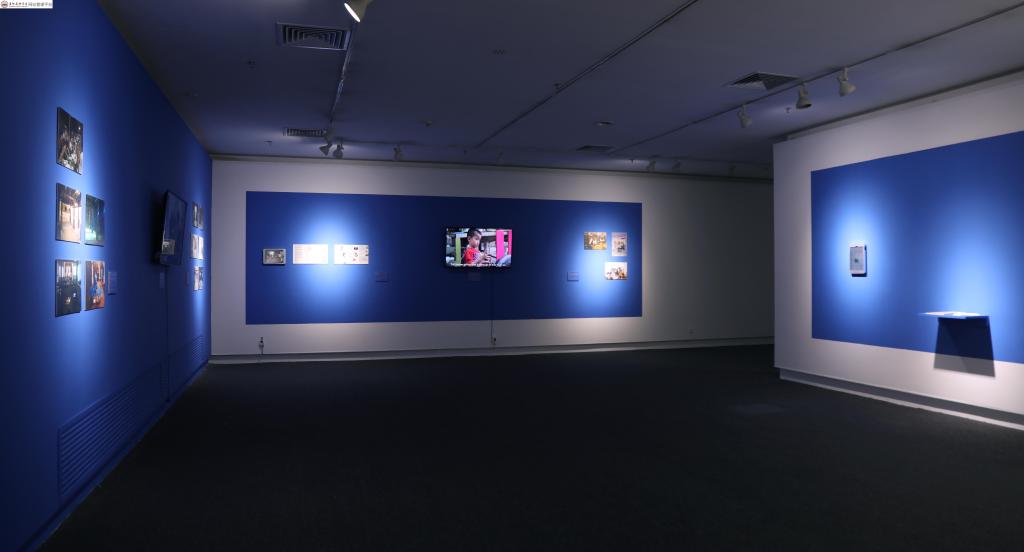“Thinking and practicing how we could allow someone distant and not physically present to encounter exhibition, to feel it and sense it, I have invited few colleagues to provide exhibition descriptions. These descriptions go beyond the image based documentation of the exhibition or its review but try to explore what is there more for us and how we could talk, share these experiences in times of seperation.
Here we allow radical and intimate expansion of description of encounter we experience physically and finding ways to allow others distant bodies to explore relationship within the world beyond judgment. For this exercise I have invited artist Jasphy Zheng and curator Cai Qiaoling and I thank them for participation. ”
by Biljana Ciric


Woman without Manifesto
I tried to describe to my friend R an exhibition I had seen. R is engaged in finance. She once studied in Europe, and is not unfamiliar with exhibitions in art galleries. However, contemporary art is the type of exhibition she rarely chooses to visit, even when she was in Europe. In my three years working in contemporary art, she has been curious about my field, but it was difficult for me to explain it to her. I therefore invited her to try "visiting" an exhibition with me through my description.
May 23, 2021
In the morning, we boarded the high-speed train from different cities to attend the wedding of a friend. Except for occasionally replying urgent messages for work, I was for most of the time in the train ride attracted by the passing scenery outside. The train went northward along the southeast coast of China, passing through many neat and clean villages and towns. Amid lush green vegetation and lucid ponds with fish and geese, lines of village houses would suddenly appear, with ancient forms featuring flying eaves and grayish green bricks. I excitedly took photos and sent them to R, who told me that she was in an online meeting with her colleagues throughout the train ride and had no time to enjoy the beautiful scenery outside. R is always working overtime, even in her long exhausting trips.
The day before the wedding, as the bride’s friends, we helped to decorate the dream house, which was full of red balloons and red Chinese characters of “happiness”. The key task was to assemble a pile of small toys that were sourced from Taobao.com. According to the plan, on the next day, the groom and the best man group were to finish the game, to make some physical comedies for the visitors, and give the relatives and friends enough red envelopes with lucky money. Now these are just part of the rituals. Originally, they were meant to prove a man’s wealth, physique and intelligence, as well as show the bride’s value as an item for exchange.
On the next day, amid laughter, an iron-faced member of the best man group successfully overcame all the “deliberate obstacles” and completed all tasks with exceptional calmness. These rituals, which were meant to create joy, warmth and connection, did not interest him into the kind of performance that everyone expected. This best man, who graduated from the mathematics department in one of the top universities of China, seriously finished every game as if it was an International Mathematics Olympiad match for him to secure a place in the university. After all these rituals, the bride toasted the bridegroom’s parents and started to call them “Mom and Dad”. “I have always been unable to understand the feeling of getting married to someone and becoming family member with people in another family.” Said a friend to me, with his ever warm but distant smile.
Before the wedding banquet in the evening, the bridegroom hurriedly brought a red plastic bag. An important ceremony was not practiced in the morning -- the bride was to put a red flower on the head of every female relative of the older generation in the bridegroom’s family. The maid of honor opened the plastic bag and saw butterfly-looking red headdress flowers tangled in a mess. She freed the flowers from the entanglement one by one, and was not happy with the fact that the headdress flowers were packed in a plastic bag. She then took the headdress box cover that the bride did not need for the time being, and laid the flowers on it neatly. When the older generation female relatives of the bridegroom’s family came to congratulate her, the bride took out the flowers from the box cover in an orderly manner, and gracefully returned the blessings of her aunts-in-law.
The MC of the wedding ceremony was proficient in creating the right atmosphere. In order to show how seriously the newly-wed couple treated their wedding, he said that the bride and bridegroom were preparing every detail of the wedding despite their overtime work a couple of days before, with the hope to leave each other with the best memories. In the long ceremony, even in the most realistic eyes, all the promises and loyalty of the couple were still touching. However, on the same night of the wedding, somebody immediately began to feel lost. The ceremony was only a brief escape from reality. What R needed to face is her work. But even work is an escape, when some other things are considered. Can she and her partner afford to buy an apartment in the city they live? What makes her hesitate so much about marriage after years with her partner?

While packing up, I could finally describe the exhibition to her:
This exhibition is entitled “Womanifesto”. It got started as a group of female artists felt that they were not supported by the art system, and gathered to help each other and provide support for each other’s work. In 2020, social distancing caused by the pandemic made people-to-people connection all the more valuable and urgent. Members of Womanifesto organized gatherings in different parts of the world.
Against the wall of the exhibition hall entrance you can find portfolios. You may use them to collect colorful pages scattered in the exhibition. These pages are the stories behind all the works you encounter in the exhibition, some are in the form of short stories and poems written by female artists. After the exhibition, the visitors may flip through these pages in the portfolio and create their own “exhibition” of the common living of women.
You will see simply-clipped brown paper hanging on the wall, with the kind words of the narrator on it, sharing with “dear visitors” the stories of every gathering. Upon entering the exhibition hall, you will be struck by a bamboo-roofed pavilion, on the table under which you find hand-sewn photo albums. You can feel the warm and clear texture of coarse cloth. Open the photo albums, and you will see women swimming in the pond, women chatting on vast green fields, women cheering together in a circle, and women strolling between the caves of Angkor Wat… You know these moments are not tranquil as they seem. Although many stories took place in lush wilderness, none of these places are an ideal land of utopia.
Everywhere in the exhibition hall, one is reminded of the threats to life: illnesses of old age, spreading of the pandemic... And there are reminders to the fragility of the life of women and their squeezed living space: longing to win a lottery to get rid of debt crisis; the need for more income to support her father; invisible labor in family life... Do you see the color pottery placed on the white heart-shape cushion? The cushion is shaped in such a way to give soft support to her mother, who cannot sit for very long. And the painted pottery is to help her mother recover her cognition of color. You can even see the fingerprints from intimate touches. The difficulties in the life of every individual do not concern the individual only. To overcome difficulties, one has to live in a community. Many of the exhibits in this exhibition are hardly artistic works. They are but objects, videos, words and images that try to lead your imagination to those moments of gathering. The colors, temperature, touch and sound also simulate those lively moments spent together in life. For instance, on a table surrounded by colorful cushions, there are handmade gloves, tableware for eating, hear-shape cushions woven with stretchy tatters, books and scarves that feel quite rough.
“I can understand that this exhibition hopes to create a sense of daily living by displaying some daily objects. I guess I know what this is about. But I just don’t seem to be able to empathize. The things you just talked about make me feel very far away. Perhaps that’s because the pandemic didn’t create too many obstacles in my life.”
While I didn’t have much presupposition about how she reacted, I felt quite surprised when I heard that she could not feel for the mutual support and gatherings of these women during the pandemic. She then shared with me an exhibition that she once visited and felt for. “It was an exhibition of the works by Filipino maids in Taiwan. The exhibition was also about storytelling about everyday life. There were photos and poems. It really touched my heart. I guess that’s because at that time I was a woman working and living in a place far from my home country.”
I realized that the reason for my failure was not that she cannot empathize with the life of others, but perhaps describing an exhibition is not an easy thing at all. The form of an exhibition features a set of complex relationships between time and space. How much can I describe in pictures and words? Be it accurate and exciting, or dull description, the linguistic and spatial re-creation presents a totally different experience for the receptor. No exhibition can be generalized into an anthology of articles, or a stack of photographs. Neither can those moments of gathering.
Our short reunion soon came to an end. I hope the next time we meet, with each other’s company, we will respond to the moments of gathering taking place in other parts of the world.

June 15, 2021
We visited Z together, who had just given birth to boy-girl twins. I had planned to tell her about “Womanifesto” too. She was staying in a medium-priced postpartum care center in Shenzhen, at a rate of 80,000 yuan for 40 days. That morning, it didn’t take R and I much time to choose a gift for the babies. But before that, we had a long discussion about the gift for the mother.
My hope was that the gift should have something to do with her hobby. This gift should only be about her, rather than remind her of her new motherhood. I remembered that she used to be good at dancing and playing musical instruments, and so did R and I. When we were girls, our mothers would love to cultivate their daughters into versatile people. “I don’t ask you to be good at it in the future, but at least you have some hobbies, and can use music or dance to express yourself”, or “I wanted to learn this when I was young, but I just didn’t have the support.” So our mothers said. In those days, in our mothers’ education practice, in addition to the reasons they felt strongly about, there was the label of “versatility” for an “outstanding” girl, so that she would not be a bookworm, but could be good at a few things, like a graceful young lady growing up in a traditional intellectual family. However, after her enrollment into the university, or perhaps even earlier than that, in the high school, neither dancing nor musical instrument was a means for Z to express or let go herself. She was no longer into music or dance. I remembered that she became a fan of Formula One, and Raikkonen. She even went to Shanghai several times for Formula One races. Unfortunate, after searching for quite some time on Taobao.com, I was not able to find any F1 franchise products that I could afford.
In the end, I chose skin care products. This seems to be yet another trap of consumerism, but the gift made her really happy. “Great! I just ran out of essence.” It was a relief that at least when she received the gift, she was thinking about her own need. “Is there anything different after giving birth?” “Yes there is. I can’t say what is different, but it just is different.”
Before I went to visit Z, I anticipated being unable to start a description about the exhibition to her. In the chitchat between friends about the chores, if I suddenly uttered, “I have visited an exhibition.” This would be really odd, as if one puts up a billboard for an entertainment star in an academic seminar on the Global South issues.
In the afternoon, R and I left. I thought I could have a chance to tell R more about the exhibition.
“Do you have to work this afternoon?”
“I don’t have to… I suppose I can work in the evening.”
On the way, her boyfriend, out of his goodwill to please me, suggested that we go to an exhibition. In the end, we didn’t go. She was “too sleepy”. Free time on weekends was really a luxury for her, and she wouldn’t like to spend the precious time standing, walking and trying to understand an exhibition that might be beyond her after all.
When we arrived at R’s home, her mother and her dog got up at the same time to meet us. Both her parents had retired. Now and then, they would spend some time with their daughter and her boyfriend, away from their place in the hometown, to cook for them, and help walk the dog when the two young people were too busy. Ever since R had this dog, we have had less time for a chat. Taking care of the dog is one of the most important tasks in her very limited free time. Like a parent that moves to a community with better education resources for better environment for the children, she spared no pains to move to an apartment near a park, for a better environment for dog walking. In the days when one is not ready to have offspring, an obedient dog seems to be “an inexpensive substitute” for children. The dog is a companion, and an adorable being. The dog may cost a lot of money, but certainly not to the level of the investment and risk of raising a child. R’s mother was busy getting me snacks and fruits, and poured me a cup of hot sesame tea from her hometown. She then enthusiastically started to prepare a meal and invited me to stay for dinner. With the care and company of her parents, and food from memories of her hometown, this feeling of home is what R could not do without. R works in a multinational corporation, but family and old friends remain her most important social network and support. For the generation that was liberated from the collective, the word “community” simply does not have an equivalent in reality. It is hard to realize how the family becomes a small gear in a giant turbo, bears the pressure of constant revolving, and turns into the only support possible for every single tooth of the gear. In a trade-off, she sometimes needs to respond to all the concerns of her parents, such as how, together with a boyfriend who is not as ambitious, she would purchase her own apartment, get married and raise her child, or that she has to retreat from a large table in the living room to her bedroom every midnight and continues her work there. When seeing her work overtime at night, her mother would get so worried and couldn’t go to sleep the whole night.
While I chatting with her mother, R fallen into sleep in the couch, murmuring “so tired”.
It suddenly occurred to me that this was exactly the reason for her saying “The things you just talked about are so far away from me”. Being busy and weary has turned the call for reflections and unity a kind of privilege, ignorance, and innocence, because one does not know what may have to be sacrificed for survival.
At 4:30 pm, I was to leave Shenzhen. I woke R up, said a quick goodbye to her. After all, we live in two cities so close to each other, with only half an hour high-speed train ride in between. Even with the reoccurrence of the Covid-19 epidemic in this region, it is possible to obtain the nucleic acid test result within 48 hours and travel between our cities, although I need to show my ID card and switch QR codes repeatedly on my journey to prove that I had no possibility of getting an inflection of Covid-19 in my previous trajectories. Here, things are still under good control of great will and efficiency. When I complained, R said, “This is a special period. You need to show your understanding.” Therefore, with such effective mechanism and cooperation, even sacrifice of the whole nation, it won’t be long before we can meet again.
The only thing is, in the end, just when and how will it not be so abrupt for me to naturally mention to my dear friend that I have visited an exhibition, one that is about how women accompanied and supported each other, and one that hopes to inspire people to survive and unite in difficulties?
Labor, observer and collector in the world of contemporary art, sometimes go excursion into somewhere else.



